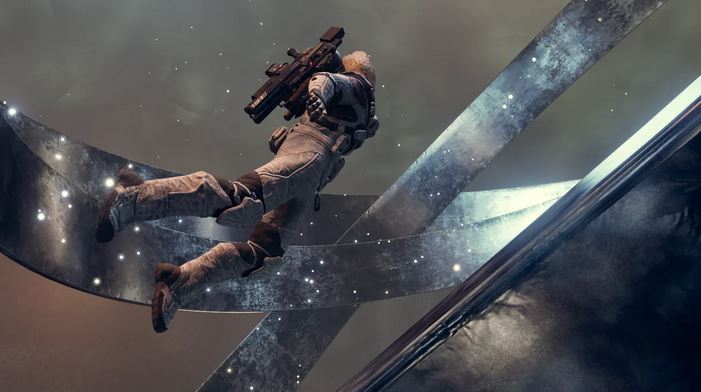Introduction to Starfield and Its Crash
The universe has always been a realm of mystery and adventure, inspiring humanity to reach for the stars. Starfield, Bethesda’s latest foray into the cosmos, captivated gamers with its vast open-world exploration and rich storytelling. But what happens when that journey takes a dark turn? The recent Starfield crash sent shockwaves through both gaming and real-world discussions about space travel. As players navigated their virtual galaxies, they couldn’t help but wonder: how does an event like this shape our understanding of space exploration? Join us as we delve into the aftermath of the Starfield crash—examining its causes, effects, and what it means for our future among the stars.
Causes and Effects of the Starfield Crash
The Starfield Crash was a significant event that shook the foundations of space travel. Many factors contributed to this catastrophic incident, with technical failures leading the charge. A series of software glitches and hardware malfunctions proved disastrous, causing spacecraft systems to fail mid-flight.
Human error also played a critical role. Miscommunication between ground control and crews resulted in poor decision-making when it mattered most. The pressure to push boundaries in exploration led many teams to overlook essential safety protocols.
The aftermath was equally profound. Lives were lost, families shattered, and trust in space agencies diminished overnight. Research into advanced safety measures took center stage as governments scrambled to restore public confidence in interstellar travel.
This crash marked not just a setback but an opportunity for introspection within the industry—a stark reminder of the delicate balance between ambition and caution in our quest for exploration beyond Earth’s atmosphere.
Impact on Space Exploration and Travel
The Starfield Crash sent shockwaves throughout the space exploration community. It raised serious questions about safety protocols and risk management in interstellar travel.
As organizations sift through debris, new regulations are being proposed. These measures aim to prevent future incidents while maintaining progress in exploration missions.
Public trust took a hit too. Space tourism enthusiasts hesitated as they pondered the risks associated with space travel. The once-growing market faced uncertainty as companies reassessed their strategies.
Yet challenges often breed innovation. Engineers and scientists are already brainstorming advanced technologies to enhance spacecraft resilience. Improved navigation systems and real-time monitoring could become standard practice for future missions.
Collaboration among international agencies has strengthened post-crash efforts, fostering unity in an industry that thrives on competition. This shared commitment may pave the way for safer explorations beyond our planet’s atmosphere.
How did the crash affect Earth?
The Starfield Crash sent shockwaves across the globe. It disrupted not only space travel but also everyday life on Earth.
Airports faced chaos as flights were grounded for safety reasons. The sudden halt in aerospace activity created a ripple effect, impacting industries reliant on space technology and exploration.
People began to question their future in an increasingly uncertain world. Governments scrambled to address public concerns about safety and security. Many voiced worries over potential environmental repercussions from debris falling back to Earth.
Public interest in astronomy soared, with citizens turning toward amateur stargazing and community science initiatives. Schools incorporated discussions of the crash into curricula, inspiring a new generation of scientists and engineers eager to understand space better.
In urban centers, conversations sparked between neighbors discussing humanity’s place amongst the stars. This event rekindled hope, curiosity, and determination among those who dared dream beyond our planet’s confines.

Theories and Speculations Surrounding the Starfield Crash
Theories about the Starfield Crash have sparked intense debate among scientists and enthusiasts alike. Some speculate that a cosmic anomaly, like a rogue black hole or an unexpected solar flare, could have disrupted navigational systems. This theory suggests that even advanced technology isn’t immune to the unpredictable forces of space.
Another line of thought revolves around human error. Critics point to potential oversights in mission planning and execution as possible culprits. The pressure to push boundaries may have led to risky decisions.
Conspiracy theories also abound, with some claiming secret experiments gone awry within spacecrafts might be at play. These ideas often intertwine scientific inquiry with elements of fiction.
Furthermore, discussions about extraterrestrial involvement create intriguing narratives. Could otherworldly beings have played a role? Such possibilities continue fueling imaginations while prompting serious investigations into what truly happened during this fateful journey through the stars.
Technology Advancements in Response to the Crash
The aftermath of the Starfield Crash ignited a surge of innovation across the tech industry. Engineers and scientists quickly shifted focus to enhance safety protocols for space travel.
One significant advancement emerged in spacecraft design. New materials were developed, offering better resilience against unforeseen impacts. These innovations promise to reduce the likelihood of future accidents.
Artificial intelligence also saw rapid growth. AI systems became integral in monitoring flight paths and predicting potential hazards before they occur. This technology aims to create a safer environment for astronauts.
Moreover, communication technologies received upgrades as well. Enhanced satellite systems ensure instant connectivity between vessels in deep space, allowing for real-time support during missions.
These advancements are not merely reactive; they pave the way for a new era of exploration where safety is paramount and risks are minimized effectively.
Rebuilding and Moving Forward: Lessons Learned from the Starfield Crash
The aftermath of the Starfield Crash has been a catalyst for change. Organizations involved in space exploration are reassessing their safety protocols and mission strategies.
Lessons learned from this incident are invaluable. Teams now prioritize transparency, sharing data about failures to prevent future disasters.
Collaborative efforts have surged, as agencies around the globe unite to enhance technology resilience. This crash highlighted the need for robust communication between different sectors of space travel.
Public interest in space exploration has not waned; it has evolved into a more informed curiosity. The tragedy brought attention to risks that must be openly discussed and addressed.
Innovation is on the rise, with engineers focused on creating safer spacecraft and advanced simulation systems. Every setback presents an opportunity for improvement, shaping a brighter future ahead in our quest beyond Earth’s atmosphere.
Conclusion:
The Starfield Crash has undeniably shifted the landscape of space exploration. As we navigate through its aftermath, it’s clear that this event will serve as a pivotal moment in our quest for the stars. The lessons learned from the crash are not merely cautionary tales but blueprints for future endeavors.
Innovations born out of necessity have already begun to emerge. New safety protocols and advanced technologies aim to prevent similar incidents, ensuring that humanity’s journey into space remains both ambitious and safe. This newfound emphasis on meticulous planning and risk assessment may well redefine how we approach interstellar travel.
Moreover, the public’s interest in space exploration continues to grow despite setbacks like these. Citizens worldwide are captivated by the mysteries of our universe and eager to support new missions. This enthusiasm is crucial; it fuels funding, research, and collaboration among nations.
